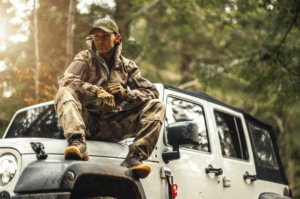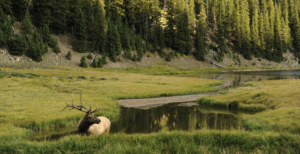
In recent years ATV injuries and deaths have dramatically increased in the U.S. due in large part to improper use and users who don’t practice basic ATV safety. Therefore, in addition to reading the manufacturer’s safe practices and enrolling in an ATV RiderCourse, you might want to check out this list of safety tips to keep you safe on the trails.
ATV Basics – The importance of understanding your ATV
Not all ATVs are the same, in fact, the wide variety from one ATV to the next can make it important to be aware of how a particular ATV works before going for a ride. There are even kid’s ATVs available nowadays, which will, of course, come with their own set of rules and regulations.
What to be aware of:
- Brake variation—Are the front and rear brakes controlled separately or linked? It is important to know the proper technique for stopping a particular ATV.
- Do you know which type of transmission you are working with and how to use it? Clutches can be automatic, hand-operated clutches, foot or hand-shifted, or fully automatic.
- Does the ATV you are using have reverse gear?
- How is the Throttle controlled? Some ATVs are equipped with a thumb lever while others are controlled by twisting a handgrip.
- Is the ATV designed for single or double occupancy?
- What is the minimum age recommendation on the ATV’s warning label? A whopping 90% of child-related ATV accidents happened because the child was too small for the vehicle they were on. The design of vehicles takes into account the size, weight, and strength of a user, therefore a child using a model that is designed for someone older will not have the control necessary to operate the machine.
Understanding these differences as well as the locations of all the proper controls and switches will make it easier for you to safely handle the vehicle.
Safety Gear – What to wear
ATVs by design can turn over, thus safety gear is extremely important to protect yourself in the case of an accident. It can also provide stability and comfort and a long ride.
- Always wear a DOT or Snell Memorial Foundation-approved helmet. The helmet should fit snugly and fasten securely. Whether you are using a full-face helmet or an open-face design, goggles should always be worn.
- Long pants and a long-sleeved shirt will protect your skin. Off-highway riding gear is always the safest alternative and provides maximum protection.
- Gloves and Boots are very important in protecting you in the event of an accident. They can also help to make your rides more comfortable. Gloves are designed to keep your hands from getting tired and sore as well as keep them warm on a cold day. Over-the-ankle boots with a small heel will protect your lower legs, feet, and ankles as well as prevent your foot from slipping off the footrests.
Safety Guidelines
- Always inspect your ATV before heading out to make sure everything is in good working condition. It is also very important to make sure you have a tool kit with you before you head out to ensure you can fix an issue that may arise.
- Tires
- Controls
- Brakes
- Shifter
- Lights and Switches
- Oil & Fuel
- ATVs flip easily so ride cautiously and make sure that you are familiar with the recommended braking and turning techniques for your particular vehicle. It is also important to be aware of how to handle your ATV on hills and in inclement weather conditions.
- Always be aware of your surroundings and terrain. Although your ATV can be used on almost any terrain there are best practices to be considerate of when in specific conditions such as mud, water, snow, and sand. Understanding how to handle your vehicle in certain environments will not only protect you but also extend the longevity of your ATV.
- Do not overload your ATV or ride with more riders than are recommended in your owner’s manual.
- Never ride on the pavement and be extremely cautious when crossing roads. ATVs are not designed for use on pavement, the additional friction caused by pavement will make your ATV difficult to control, unstable and unpredictable. One of the leading causes of accidents and fatalities is riders improperly crossing roads or using paved roads.
- Ride in a group or with a partner, the buddy system is the best way to make sure everyone gets home safe.
- Riders under 16 years of age should always be supervised.
- Do not drink and drive. Never ride while under the influence of alcohol or drugs.
- Understand the laws in your area.
To get the most out of your ATV experiences follow safety guidelines and understand your particular vehicle. Visit your ATV parts shop for things like deviant race parts and don’t forget to ride responsibly and try to inflict the least amount of damage to your surroundings as possible. This will ensure that you will always have a place to ride and that the individuals who own or maintain the area will not have a problem with you enjoying it.
Resources: ATV Safety Institute “Tips and Practice Guide for All-Terrain Vehicle Rider” Specialty Vehicle Institute of America. 2008.
To see the original article, go to https://gunnhook.com/outdoor-journal/18-essential-atv-safety-tips/







